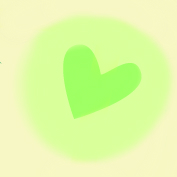Conscious Breathing
Similar to Warrior Pose or Triangle Pose, deep breathing requires some technique.
- Start by sitting in a comfortable position with your chest lifted and your spine nice and tall. This gives your torso enough room to expand allowing for a full, deep breath.
- Become very aware of your breath. Feel the air enter your nostrils. Feel the air travel down your throat. Watch your lungs inflate and deflate with each breath.
- Begin to count. Inhale for 6 counts. Exhale for 8 counts. If that’s easy, increase your inhalations to 8 counts and your exhalations to 12 counts. Notice where in your torso your breath goes.
- Inhale through your nose sending your breath to:
- your belly for 2 counts. Your diaphragm is contracting and pushing your abdomen outward. This allows the lungs to fully expand.
- your middle torso for 2 counts. Imagine your ribs expanding horizontally in all directions. Expanding your ribs creates more room for your lungs to expand.
- your chest for 2 counts. The top of your lungs actually touch your collarbones. By sending the breath into your chest, you are topping the lungs off with fresh air.
- Slowly exhale out your nose for 8-12 counts. First, empty your chest, then your torso, then your belly.
- Repeat for 1-5 minutes. If at any time you become anxious or light headed, return to normal breathing.
The nose is for breathing. The mouth is for eating.
Breathing through the mouth can be beneficial when you need to rapidly release carbon dioxide during an intense work out. When I am hiking up a mountain or climbing a stair case, I am definitely huffing and puffing out of my mouth! But breathing through the nose is preferred for many reasons. Inhaling through the nose filters, moisturizes and warms incoming air. Exhaling through the nose creates greater air pressure and slows the exhalation. This allows the lungs to extract more oxygen from each breath.
The olfactory bulbs in your nose are connected to your hypothalamus. The hypothalamus interacts with the pituitary gland to regulate hormone secretion, heart rate, blood pressure, circulation, digestion, mental and emotional states, and so much more! Breathing through the mouth bypasses the olfactory bulbs and shortens the breath. Breathing through the mouth gives the nervous system the impression that it’s time to fight, flight, or freeze.
Nadis
The ancient yogis knew all about breathing through the nose. They identified nadis, or subtle channels that allow energy to flow throughout the body like electrical currents. While there are thousands of nadis, one major nadi is directly connected to the left nostril and another major nadi is directly connected to the right nostril. Breathing through the nostrils clears the nadi channels allowing prana, or life force, to flow freely without resistance throughout the body.
Just Breathe
So what if you forget and breathe through your mouth. Don’t worry! The important part is that you are aware of your breath. As with everything in yoga, once you are aware, you can do just about anything!
References
https://www.gaiam.com/blogs/discover/breathing-is-believing-the-importance-of-nasal-breathing
https://www.yogajournal.com/practice/how-to-exhale-in-pranayama

